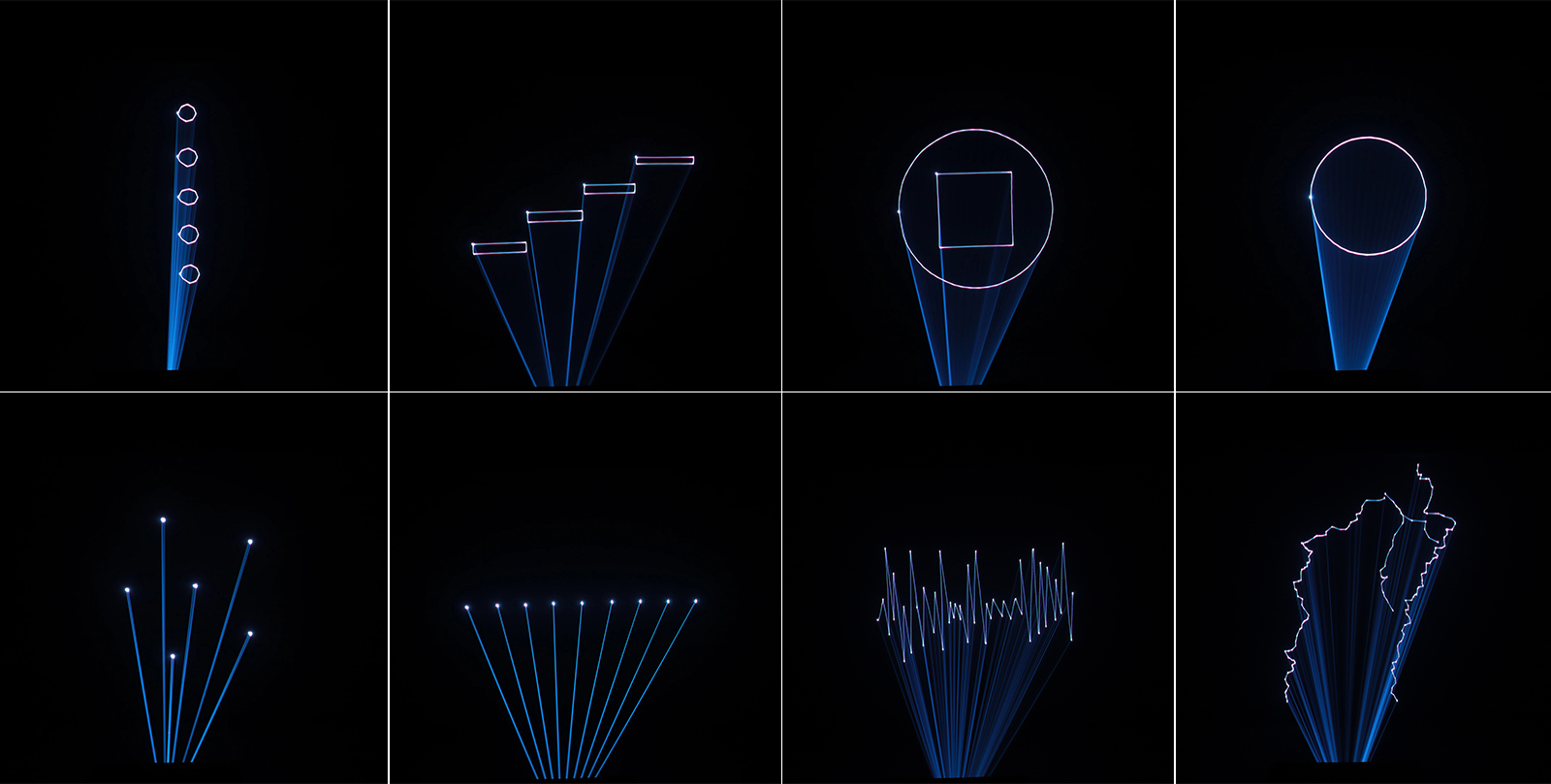The width of a single wave is measured in nano-meters and defines the colour and
visibility of the laser
beam. The visible spectrum of the human eye is roughly between
400nm and 700nm, going from violet to a dark red colour. A human eye is most sensitive
to a green light of around 555nm, meaning that a 1W of green laser will always appear
more visible than 1W of any other colour laser. 1W of quality
laser light is very powerful
and although it doesn’t sound like much it can burn eye retinas, skin and clothes or even
start a fire!
What makes the laser visible?
Mainly it is the particles of dust in the air that the laser beam hits on its path. That’s why
we “laserists” use haze or smoke machines to make lasers more visible. Too much of the
haze or smoke will kill it, but the right amount will make all the difference between no
show and a great show.When outdoors, lasers mainly reflect off dust and mist in the air
but due to unpredictable wind conditions we can never make sure the hazers or smoke
machines will be effective enough. And that ’ s why we use high power lasers for outdoor
shows – to substitute for the lack of dust, haze and smoke.
How far does it go?
Depending on the power output of the system and weather conditions, the laser can be
visible for miles –that is why we need to be cautious about aircrafts when performing
outdoor shows. And if you get a system that is powerful enough then yes, it can reach
the Moon.
Colours
Standard full colour analogue lasers use three primary colours: Red, Green and Blue. By
mixing those together you can pretty much get any secondary colour:
Red + Blue = Magenta
Red + Green = Yellow
Green + Blue = Cyan
Red + Green + Blue = White
Of course the number and precision of the colours is determined by the modulation,
stability and linearity of the system. If the system is not stable enough, it will produce
different colours every time it is used,making it virtually impossible to match the colours
of two systems at any one time. This is very often the case with systems from far east
manufacturers and with re-branded lasers that are being presented as European makes.
Scanning System
A scanning system is essentially two tiny mirrors, each moving on X or Y axis. By working
together they can “scan” the laser beam in all directions. Once a shape is scanned more
than 20 times per second, it appears static to the human eye. So any shape drawn by a
laser is actually produced by one single laser beam running around like crazy. Every
scanning system has a mechanical limit of how fast it can move its mirrors and therefore
how many points it can display at any one second and that is usually represented in
Points Per Second at a certain scanning angle, i.e. 8 degrees.
After-Sales Service and Warranty:
Buyer Protection: We Keep Buyer Information Completely Confidential!

















 Scan QR Code
Scan QR Code